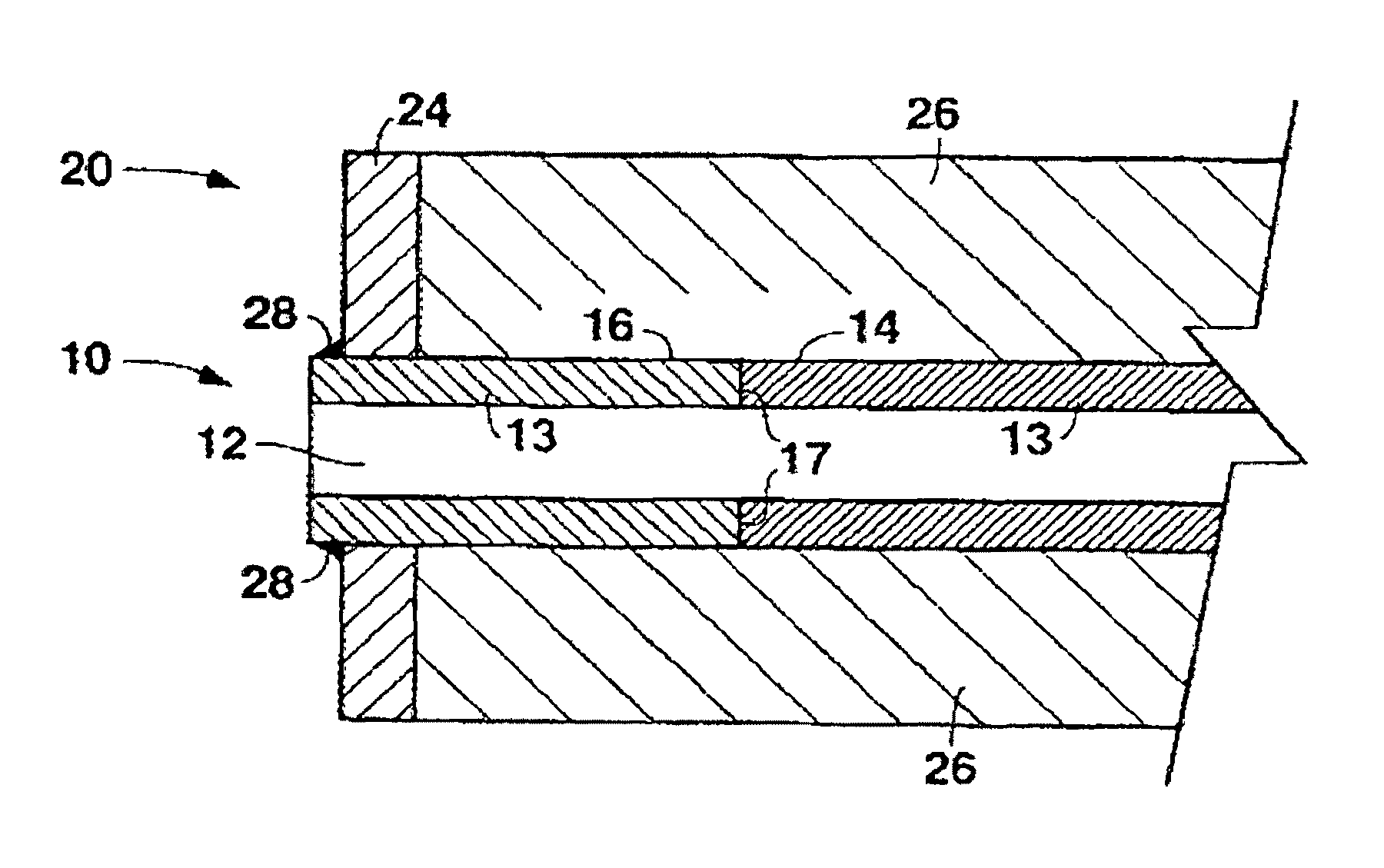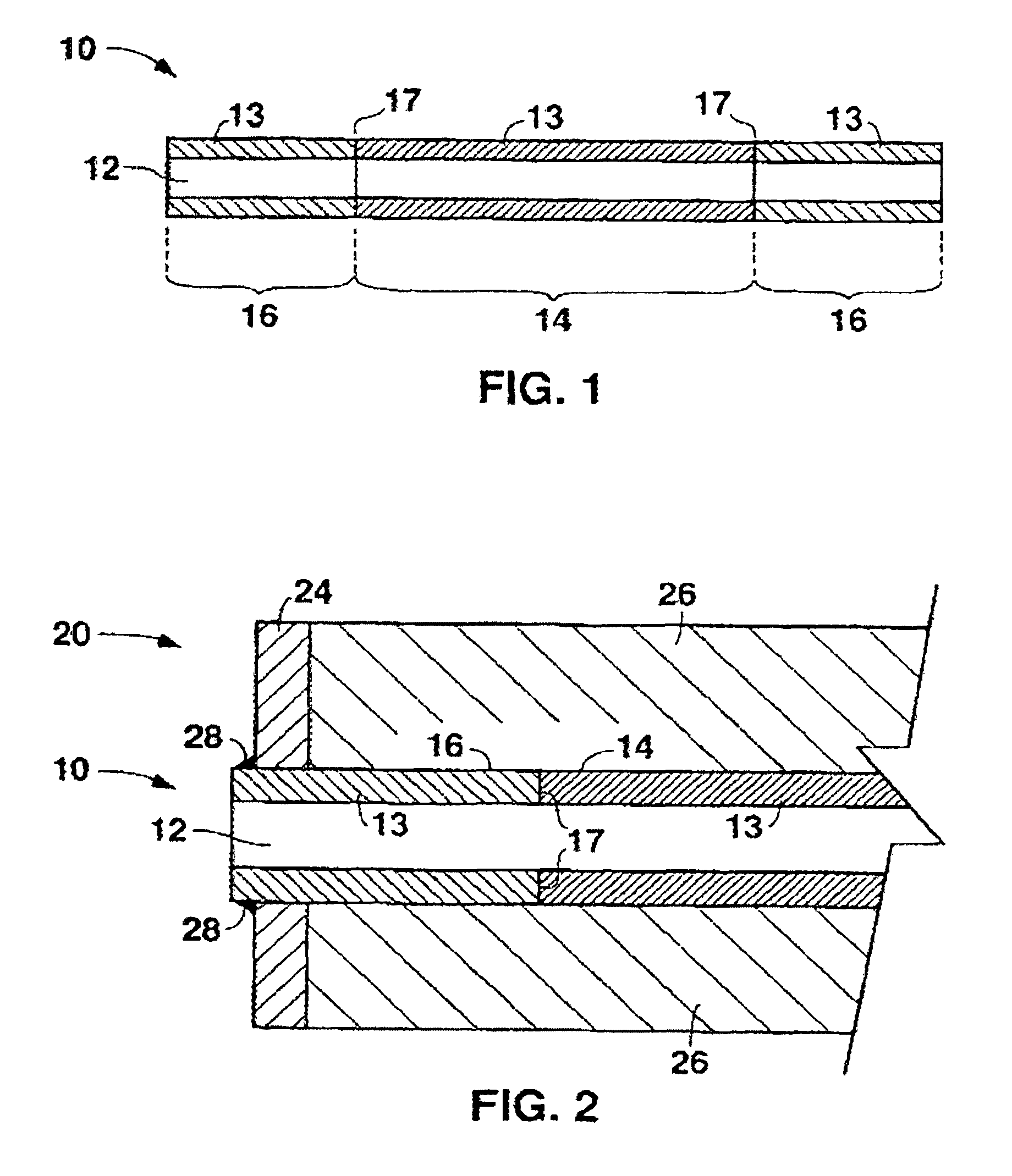Corrosion resistant fluid conducting parts, methods of making corrosion resistant fluid conducting parts and equipment and parts replacement methods utilizing corrosion resistant fluid conducting parts
a technology of fluid conducting parts and fluid conducting components, which is applied in the direction of welding/cutting auxillary devices, non-electric welding apparatuses, auxillary welding devices, etc., can solve the problems of stainless steel corroding, few materials can withstand internal and external conditions, and equipment failure, etc., to achieve the effect of reducing corrosion resistan
- Summary
- Abstract
- Description
- Claims
- Application Information
AI Technical Summary
Benefits of technology
Problems solved by technology
Method used
Image
Examples
example 1
Comparative Study of Solid State and Fusion Weld Joints
[0109]In connection with the methods disclosed herein, the mechanical and corrosion characteristics of zirconium-to-titanium fusion weld joints were evaluated relative to weld joints produced by solid state welding. It is well known that zirconium and titanium can be fusion welded using techniques such as, for example, gas tungsten arc welding, metal gas arc welding, plasma welding, and resistance welding, to produce a high strength weld joint. As noted above, however, the weld produced on joining dissimilar materials by fusion welding can be affected by corrosion and is subject to solid solution hardening that can significantly increase the hardness and strength of the weld zone. In autogenous (that is, without the use of filler metal) fusion welding of zirconium to titanium, the zirconium-titanium alloys produced in the weld zone will vary from 100% zirconium to 100% titanium. This alloying effect can be somewhat lessened thro...
example 2
Fabrication of Multi-Layer Tube
[0126]One embodiment for metallurgically bonding dissimilar reactive metals such as, for example, titanium and zirconium, to form a multi-layer, fluid conducting member involves three distinct process routes. The first process route is directed to fabricating an outer billet, or base component. The second process route is directed to fabricating an inner liner component. In the third process route, the base component and the liner component are combined into an assembled billet, and the billet is then extruded, cold worked, and heat treated to provide the multi-layer tube. In the following paragraphs, the three process routes are described in greater detail as specifically applied in the production of multi-layer tubing including a titanium Grade 3 (UNS R50550) outer base and a Zircadyne 702™ (Zr702) (UNS R60702) inner liner. Zr702 alloy is available from ATI Wah Chang, Albany, Oregon, and has the following chemistry (in weight percentages of total all...
PUM
| Property | Measurement | Unit |
|---|---|---|
| temperatures | aaaaa | aaaaa |
| pressures | aaaaa | aaaaa |
| length | aaaaa | aaaaa |
Abstract
Description
Claims
Application Information
 Login to View More
Login to View More - R&D
- Intellectual Property
- Life Sciences
- Materials
- Tech Scout
- Unparalleled Data Quality
- Higher Quality Content
- 60% Fewer Hallucinations
Browse by: Latest US Patents, China's latest patents, Technical Efficacy Thesaurus, Application Domain, Technology Topic, Popular Technical Reports.
© 2025 PatSnap. All rights reserved.Legal|Privacy policy|Modern Slavery Act Transparency Statement|Sitemap|About US| Contact US: help@patsnap.com



